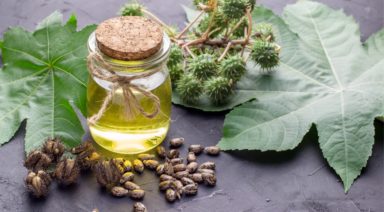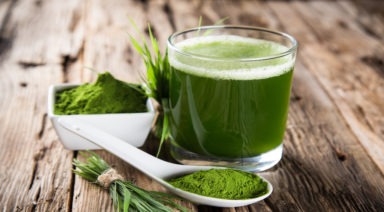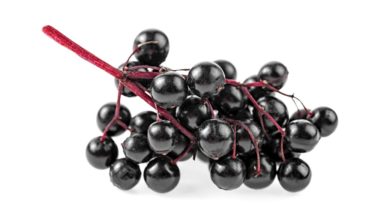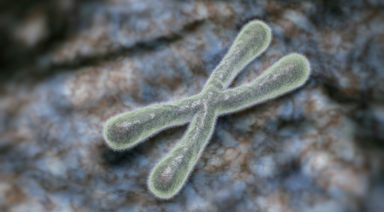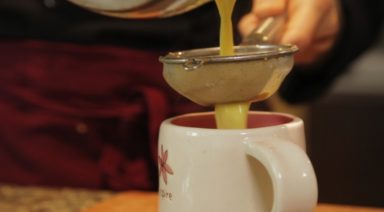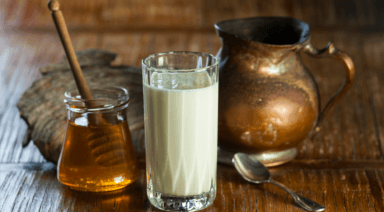The Top 10 Plants for Removing Indoor Toxins

Common indoor plants may provide a valuable weapon in the fight against rising levels of indoor air pollution. NASA scientists are finding them to be surprisingly useful in absorbing potentially harmful gases and cleaning the air inside homes, indoor public spaces and office buildings.
The indoor pollutants that affect health are formaldehyde, Volatile Organic Compounds (benzene and trichloroethylene or TCE), airborne biological pollutants, carbon monoxide and nitrogen oxides, pesticides and disinfectants (phenols), and radon. These pollutants contribute to ‘sick building syndrome’, which causes symptoms ranging from allergies, headaches and fatigue through to nervous-system disorders, cancer and death.
Through studies conducted by NASA, scientists have identified 50 houseplants that remove many of the pollutants and gases mentioned above. Dr. B. C. Wolverton rated these plants for removing chemical vapors, ease of growth, resistance to insect problems, and transpiration (the amount of water they expire into the air). NASA, with assistance from the Associated Landscape Contractors of America, conducted a two-year study directed by Dr. B.C. Wolverton, an environmental engineer from Picayune, Mr. Wolverton has worked as a research scientist for NASA for some 20 years. His study, in the late ’80s and early ’90s, of the interaction of plants and air found that houseplants, when placed in sealed chambers in the presence of specific chemicals, removed those chemicals from the chambers.
Dr. B.C. Wolverton, researcher and author of “How to Grow Fresh Air – 50 Houseplants that Purify Your Home or Office”, conducted plant studies for NASA that determined that plants can clean pollutants in homes, offices, factories and retail outlets. Later, Wolverton expanded the study and assigned plants a rating from one to 10, based on a plant’s ability to remove chemical vapors or indoor air toxins, ease of growth and maintenance, resistance to insect infestation and the rate at which water evaporates from the leaves.
Top ten plants for removing formaldehyde, benzene, and carbon monoxide from the air
1. Areca Palm (Chrysalidocarpus lutescens)
Also called the “Butterfly Palm”. An upright houseplant that is somewhat vase shaped. Specimen plants can reach 10 to 12 foot in height. Prefers a humid area to avoid tip damage. Requires pruning. When selecting an Areca palm look for plants with larger caliber trunks at the base of the plant. Plants that have pencil thin stems tend to topple over and are quite difficult to maintain.
2. Lady Palm (Rhapis excels)
Also called the “Lady Palm”, this durable palm species adapts well to most interiors. The Rhapis are some of the easiest palms to grow, but each species has its own particular environment and culture requirements. The “Lady Palm” grows slowly, but can grow to more than 14′ in height with broad clumps often having a diameter as wide as their height.
3. Bamboo palm (Chamaedorea seifrizii)
Also called the “reed palm”, this palm prefers bright indirect light. New plants will lose of some interior foliage as they acclimate to indoor settings. This plant likes to stay uniformly moist, but does not like to be over-watered or to sit in standing water. Indoor palms may attract spider mites which can be controlled by spraying with a soapy solution.
4. Rubber Plant (Ficus robusta)
Grows very well indoors, preferring semi-sun lighting. Avoid direct sunlight, especially in summer. Young plants may need to be supported by a stake. The Ficus grows to 8’ with a spread of 5’. Wear gloves when pruning, as the milky sap may irritate the skin. Water thoroughly when in active growth, then allow the soil to become fairly dry before watering again. In winter keep slightly moist.
5. Dracaena “Janet Craig” (Dracaena deremensis)
The Dracaena grows to 10’ with a spread of 3’. Easy to grow, these plants do best in bright indirect sunlight coming from the east/west. They can adapt to lower light levels if the watering is reduced. Keep the soil evenly moist and mist frequently with warm water. Remove any dead leaves. Leaf tips will go brown if the plant is under watered but this browning may be trimmed.
6. Philodendron (Philodendron sp.)
One of the most durable of all house plants. Philodendrons prefer medium intensity light but will tolerate low light. Direct sun will burn the leaves and stunt plant growth. This plant is available in climbing and non-climbing varieties. When grown indoors, they need to be misted regularly and the leaves kept free of dust. Soil should be evenly moist, but allowed to dry between watering.
7. Dwarf Date Palm (Phoenix roebelenii)
A hardy, drought-tolerant and long-lived plant, the Dwarf Date Palm needs a bright spot which is free of drafts. It grows slowly, reaching heights of 8-10’. The Dwarf Date Palm should not be placed near children’s play areas because it has sharp needle-like spines arranged near the base of the leaf stem. These can easily penetrate skin and even protective clothing.
8. Ficus Alii (Ficus macleilandii “Alii”)
The Ficus Alii grows easily indoors, and resists insects. It prefers a humid environment and low to medium light when grown indoors. The Ficus Aliii should not be placed near heating or air conditioning vents, or near drafts because this could cause leaf loss. Soil should be kept moist but allowed to dry between watering.
9. Boston Fern (Nephrolepis exaltata “Bostoniensis”)
The Boston fern grows to 4’ in height with a spread up to 5’. It has feathery ferns which are best displayed as a hanging plant. It prefers bright indirect sunlight. Keep the soil barely moist and mist frequently with warm water. This plant is prone to spider mites and whitefly which can be controlled using a soapy water spray. Inspect new plants for bugs before bringing them home.
10. Peace Lily (Spathiphyllum sp. “Mauna Loa”)
The Peace Lily is a compact plant which grows to a height of 3’ with a 2’ spread. This hardy plant tolerates neglect. It prefers indirect sunlight and high humidity, but needs to be placed out of drafts. For best results, the Peace Lily should be thoroughly watered, then allowed to go moderately dry between waterings. The leaves should be misted frequently with warm water.
Why Do We Sleep? For More Reasons Than You May Think

Most of us spend about a third of our lives asleep, despite not really having an answer to the question, ‘why do we sleep?’ Now neuroscientists are realizing that sleep is more important than previously thought. They’re also realizing that the worn-out platitude, “you can sleep when you die,” is terrible advice, as that day will undoubtedly come sooner if you short yourself on a good night’s sleep.
According to most contemporary research, you should be getting around seven to eight hours of sleep every night, and if you think you can get by on fewer than that, there’s a really good chance you’re fooling yourself.
Why is Sleep Important?
While the exact mechanisms of sleep are still being studied, neuroscientists including Matthew Walker have made interesting learnings about what happens when we deprive ourselves of sleep and the impacts sleep (or lack thereof) has on society as a whole.
When we’re awake, Walker says that essentially, we’re causing low-level brain damage. By this, he is referring to the build-up of the sticky, toxic junk in our brain known as beta-amyloid. This accumulation of beta-amyloid has been found to correspond with the onset of Alzheimer’s, among many other adverse health effects correlated with a lack of sleep.
Sleep is beneficial as more than just a healing function; it also replenishes spent resources and regulates hormone levels that dictate our appetite, cognitive function, and motor skills. The two hormones that dictate whether we are hungry or full, ghrelin and leptin, have been observed to flare up and down, respectively, when we’re sleep deprived. This inevitably leads to an increase in hunger, but even worse, it leads our bodies to crave unhealthy and fattening foods — those heavy on carbs and light on greens. In fact, people who run on four to five hours of sleep per night tend to eat 200-300 more calories per day.
For men, sleep is an important regulator of hormones, most notably testosterone. Sleep-deprived males can have the same virility and strength as a man 10 years their senior. For women, a lack of sleep can lead to a significantly increased risk of breast cancer and drops in immune hormones.
According to Walker, just introducing a single night of just four hours of sleep among a normal eight-hour sleep schedule, can bring about a 70 percent drop in natural cancer-killing cells, the immune assassins that target malignant carcinogens. Every day our bodies produce these cells and others to fend off disease and maintain our health, and while a cat nap might make you feel refreshed, it won’t make up for the loss of these cells.








